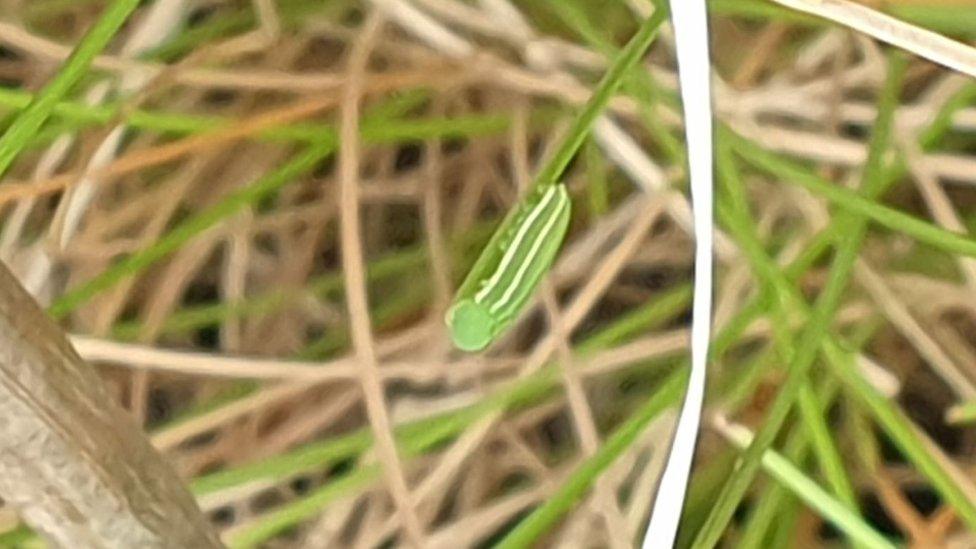Rare argus butterfly returns to wild after 150 years
- Published

The argus butterfly became endangered due to changes in agricultural methods in Britain
Dozens of endangered butterflies are being reintroduced to the wild by a zoo as part of a conservation project.
The argus butterfly has been in severe decline in the UK due to changes in agriculture over the last two centuries.
Chester Zoo has been breeding the species and has now reintroduced about 45 butterflies to a secret location in Greater Manchester.
Zookeeper Heather Prince said the scheme had been "incredibly rewarding".
The species is thought to have last been present in the region some 150 years ago.
Ms Prince continued: "We've contributed to preventing their extinction.
“Butterflies have undergone a huge decline in the last 40 years in the UK, with more than 20% disappearing altogether as a result of habitat loss."

Cocoons were taken to a habitat in the countryside around Greater Manchester
Lancashire Wildlife Trust was also involved in the project, following in the footsteps of a similar push which saw the butterflies successfully reintroduced to Heysham Moss in Lancashire.
The species, also known as the large heath butterfly, had inhabited boggy peatlands around Manchester, but the introduction of peat drainage in the 18th and 19th centuries made them disappear, with only a few other populations existing around the country.
Lancashire Wildlife Trust has also been working with Natural England to restore several boggy peatland areas in the hope of helping the butterfly thrive again.

Factfile: The argus butterfly
The argus butterfly (aricia agestis) once thrived in the UK but declined due to changes in agricultural methods.
The species inhabit boggy peatlands and is very sedentary, rarely moving more than 100m during its entire life.
Their caterpillars are capable of surviving long periods of hibernation.
The cocoons hang from plants and are green with black stripes, allowing them to camouflage and avoid predators.
Surviving populations are found mostly in Scotland and the largest colony in England is in Northumberland.
Sources: Lancashire Wildlife Trust, South West Scotland Butterfly Conservation, UK Butterflies and the Forestry Commission